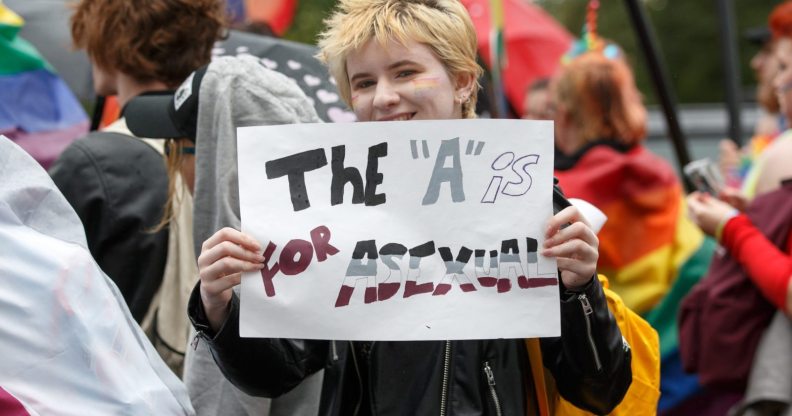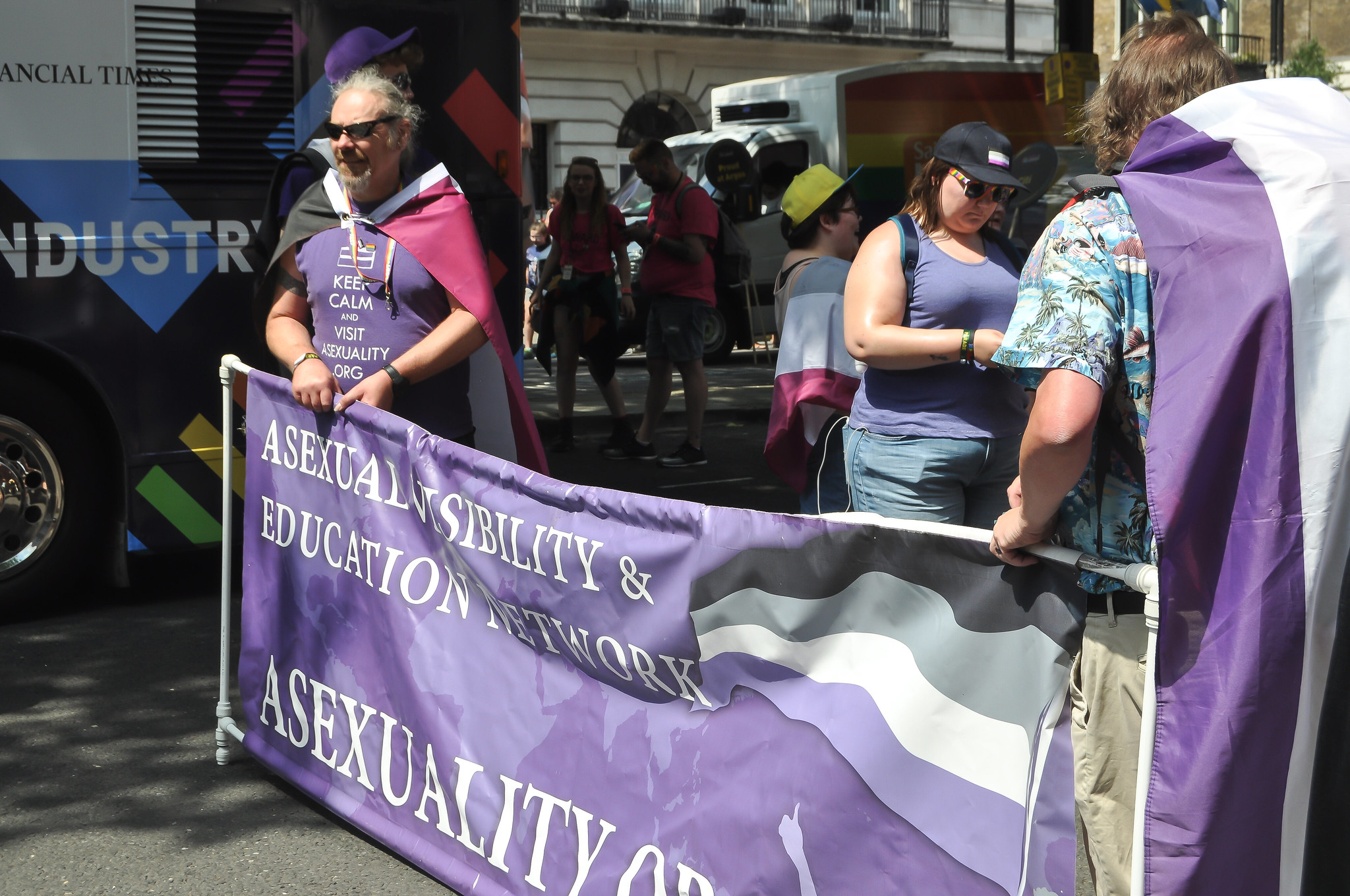This is how many LGBT people identify as asexual in America

1.7 percent of sexual minority people in the US identify as asexual. (Robert Perry/ Getty)
Research from the Williams Institute has shown for the first time how many of America’s sexual minority population identifies as asexual.
Out of a sample of around 1,500 lesbian, gay and bisexual people, 1.7 percent said they identified as asexual.
The Asexual Education and Visibility Network (AVEN) defines asexuality as: “Someone who does not experience sexual attraction or an intrinsic desire to have sexual relationships.”
There is a lot of diversity in how people experience being asexual however, levels of sexual attraction can vary and asexual people are often still in romantic relationships.
The research found that those who identified as asexual “were as likely to report being in an intimate relationship as non-asexual LGB adults.”
They were also likely to as non-binary (72 percent) or as women (27 percent) and 86 percent were assigned female at birth.
People between the ages of 18 and 27 were also far more likely to identify as asexual.
Lead author of the study Esther D. Rothblum said: “Asexuality is an emerging identity.
“Given that the majority of asexual respondents were young, we expect that the prevalence and understanding of asexuality will grow as more youth reach adolescence and become familiar with the identity.”

(MangakaMaiden Photography/ Flickr)
The data suggests that 0.08 percent of the total US population identify as asexual
In March this year, the Williams institute published data which said that the total LGBT+ population in the US was 11,343,000, or 4.5 percent of the total population.
This new data would suggest that around 0.08 percent of the total US population, which is around 260,000 people, identify as asexual.
However the number is likely to be higher than this, as some people who identify as asexual may not also identify as part of the LGBT+ community.
Study author Ilan H. Meyer said: “We see in these results that asexuals are an integral part of the LGBT community.
“It is important to note, however, that this study only included asexuals who also identify as LGB, so the results are pertinent to a segment of the total asexual population. We have more to learn about asexual heterosexuals.”

